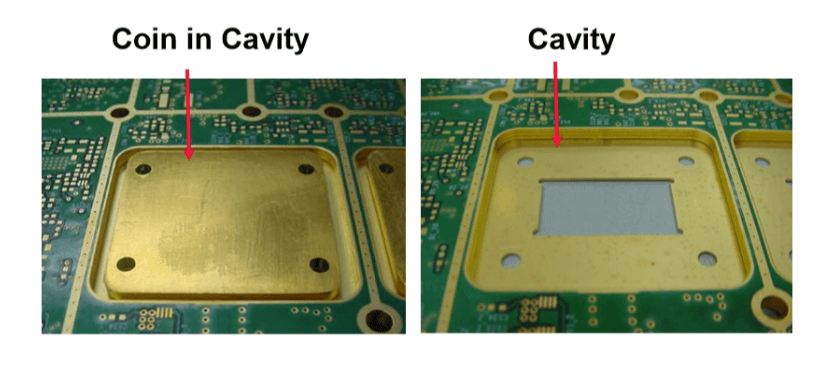14 important features of high reliability PCB
No matter what the internal quality of PCB, it is almost the same on the surface. It is through the surface that we see the differences that are critical to the durability and function of the PCB throughout its life.
Whether in the manufacturing process or in actual use, PCB must have reliable performance, which is very important. In addition to the related costs, the defects in the assembly process may be brought into the final product by the PCB, which may cause a claim in the actual use process. Therefore, from this point of view, it is not too much to say that the cost of a high quality PCB relative to the finished product is negligible.
In all market segments, especially those producing products in key application areas, the consequences of such failures are unimaginable.
These aspects should be kept in mind when comparing PCB prices. Although reliable, guaranteed and long-lived products have higher initial costs, they are worth the money in the long run.
The 14 most important features of high reliability PCB are as follows:
1. 25 μm hole wall copper thickness
Benefits: increased reliability, including improved z-axis expansion resistance.
Risk of not doing so:
Electrical connectivity problems during assembly (inner layer separation, hole wall fracture) or failure may occur under load conditions in actual use. IPC-CLASS 2 (the standard adopted by most factories) requires 20% less copper plating.
2. No soldering repair or broken circuit repair
Benefits: perfect circuit ensures reliability and safety, no maintenance, no risk.
Risk of not doing so:
If not repaired properly, the circuit board will open. Even if the repair is proper, there is a risk of failure under load conditions (vibration, etc. ), which may occur in actual use.
3. Exceed the cleanliness requirements of IPC specification
Benefits: improving PCB cleanliness can improve reliability.
Risk of not doing so:
The accumulation of residue and solder on the printed circuit boards will bring risks to the solder mask, and the ionic residue will lead to the risk of corrosion and contamination of the welding surface, which may lead to reliability problems (bad solder joint / electrical failure), and ultimately increase the probability of actual failure.

4. Strictly control the service life of each surface treatment
Benefits: Solderability, reliability, and reduced risk of moisture intrusion.
Risk of not doing so:
Because of the metallographic changes in the surface treatment of old circuit boards, solderability problems may occur, and moisture intrusion may lead to delamination, inner layer and hole wall separation (open circuit) during assembly or actual use.
5. Using internationally renowned material - no "local" or unknown brands
Benefits: improved reliability and known performance.
Risk of not doing so:
Poor mechanical properties mean that the circuit board will not perform as expected under assembly conditions. For example, high expansion performance can lead to delamination, open circuit and warpage problems. Weakening of electrical characteristics can lead to poor impedance performance.
6. The tolerance of CCL meets the requirements of IPC-4101 CLASSB / L
Advantages: strictly controlling the thickness of dielectric layer can reduce the deviation of expected value of electrical performance.
Risk of not doing so:
The electrical performance may not meet the specified requirements, and the output / performance of the same batch of components will be greatly different.
7. Define the solder mask material to ensure compliance with IPC-SM-840 CLASS T requirements
Benefits: recognize "good" ink, achieve ink safety, ensure solder mask ink in line with UL standards.
Risk of not doing so:
Poor quality ink can lead to adhesion, flux resistance and hardness problems. All of these problems will lead to the solder mask from the circuit board, and eventually lead to copper circuit corrosion. Poor insulation characteristics can cause short circuits due to unexpected electrical connectivity / arcing.
8. Define the tolerance of profile, hole and other mechanical features
Benefits: strict tolerance control can improve product dimensional quality - improved fit, shape and function.
Risk of not doing so:
Problems during assembly, such as alignment / fit (pressing of the fitting pin will only be found when the assembly is complete). In addition, due to the increase in size deviation, there will be problems in mounting the base.
9. Specify the thickness of the solder mask
Benefits: improved electrical insulation characteristics, reduced risk of spalling or loss of adhesion, and enhanced resistance to mechanical impact - wherever it occurs!
Risk of not doing so:
Thin solder mask can lead to adhesion, flux resistance and hardness problems. All of these problems will lead to the solder mask from the circuit board, and eventually lead to copper circuit corrosion. Poor insulation characteristics due to thin solder mask can cause short circuit due to unexpected conduction / arc.
10. The appearance requirements and repair requirements are defined
Benefits: in the manufacturing process, careful care and careful casting safety.
Risk of not doing so:
A variety of abrasions, minor injuries, repairs and repairs - the board works but doesn’t look good. In addition to the problems that can be seen on the surface, what are the invisible risks, the impact on the assembly, and the risks in actual use
11. Requirements for plug hole depth
Benefits: high quality plug holes will reduce the risk of failure during assembly.
Risk of not doing so:
The residual gold in the plug welding process is not satisfactory. In addition, tin beads may be hidden in the hole, which may splash out during assembly or actual use, causing short circuit.
12. Specify the brand and model of strippable blue glue
Benefits: the designation of strippable blue glue can avoid the use of "local" or cheap brands.
Risk of not doing so:
Poor quality or cheap strippable adhesive may blister, melt, crack or solidify like concrete during assembly, so that the peelable adhesive will not peel off / work.
13. Perform specific approval and ordering procedures for each purchase order
Benefits: the implementation of this procedure ensures that all specifications have been confirmed.
Risk of not doing so:
If the product specifications are not carefully confirmed, the resulting deviation may not be found until the assembly or final product, which is too late.
14. The panel board with scrap unit is not acceptable
Benefits: no partial assembly can help customers improve efficiency.
Risk of not doing so:
If the x-out is not clearly marked, or it is not isolated from the cover panel, it is possible to assemble the known damaged board, thus wasting parts and time.





